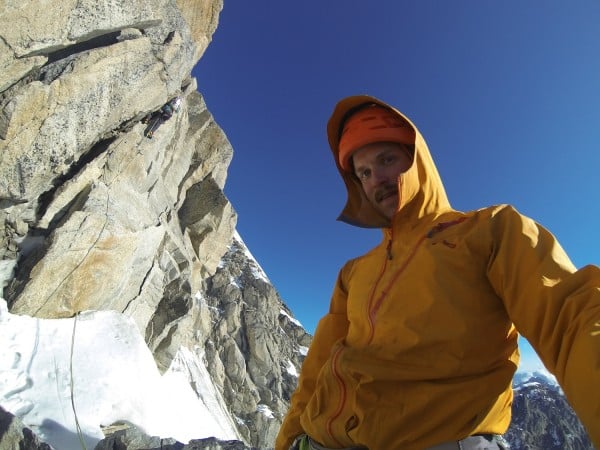How to: Stay Hydrated in the Alpine
Originally Published July 29th, 2013.

Photos and Story By Graham Zimmerman
Over the past few years I have been spending a significant amount of time alpine climbing in the Alaska Range. It is a beautiful and formidable range with huge icy faces, tremendous buttresses and amazingly expansive glacial systems. To spend time climbing in those hills requires fitness, tenacity, strong wits and excellent systems for surviving the often arctic conditions.
One of the main systems for survival is hydration. Very little liquid water exists in the mountains of Alaska, particularly during the spring when many climbs are completed. In this blog post I am going to cover how we stay hydrated while on a multiday route in the Alaska Range.
It is relatively easy to melt and store water in base camp since fuel tends to be in excess, storage is easy and we can use large pots and multiple white gas stoves to pump out BTUs and melt snow. On route though it can be significantly more arduous since we are dealing with weight as a major issue both in terms of our system itself and how little gas we can get away with carrying. This means that our systems for making water (and food) on route are dialed down to a simple science of the lightest products we can find for getting the job done efficiently. And for us, at the center of this system, is the Reactor Stove by MSR.
Our faith in this piece of equipment is well established. In 2010 while on Mt Bradley in the Ruth Gorge, also in the Alaska Range, the efficiency of the stove saved our bacon when a route we expected to take one and half days took four. We only brought one canister of gas, and amazingly, it lasted us the duration, allowing us to get down safely. Ever since then we’ve sworn by this stove, even though we now generally bring one and a half canisters of gas on route.
When we arrive at a bivy location our first priority is setting up whatever kind of shelter we have, which can range from erecting a small tent to simply putting on all our layers to hunker down for a few hours. Second is getting hydrated and fed, and this is where the Reactor comes in.
We get out the stove and its hanging kit, put it together and get it clipped off where it is going to be secure but not in the way. Often times this clip off point is on the anchor we are using or off the handle of an ice tool shoved into the side of the mushroom on which we are bivied. An area is designated from which to pull clean snow and we get to work.
The few ounces of water remaining from the day is placed at the bottom of the pot and we use this as starter water for melting snow. By starting with a little water we are able to avoid burning the snow, making the resulting water much more palatable.
It is one person’s full time job to tend to the stove. Using gloved hands we alternate warming them on the pot’s vents and then moving them to the canister to warm it, keeping the gas in the canister vaporized and making it more efficient. This way the stove quickly converts snow to water which we place into one of our two liter dromedary bags.
Once we have enough water for drinking we make two last pots of tepid water to be used for our recovery drink and our dinner of rolled quinoa, salami, cheese, salt and turmeric that we mixed up in a used freeze dried meal packet. All of this food is designed so that it can be ‘cooked’ with lukewarm water. Meaning that it is more fuel efficient to cook, this also means that we have to pay close attention to the pot since we are trying to catch the water at a very specific temperature.
Once we’ve been through this process we are ready to snuggle up and sleep for a few hours before getting up and climbing again. With these systems we are able to hydrate and eat efficiently and effectively so that we are able to keep climbing. All the while our weight is kept to an absolute minimum so that while climbing our movement is not hindered.
This is a great set of systems that I have used on many alpine climbs and plan to continue using for seasons come!
